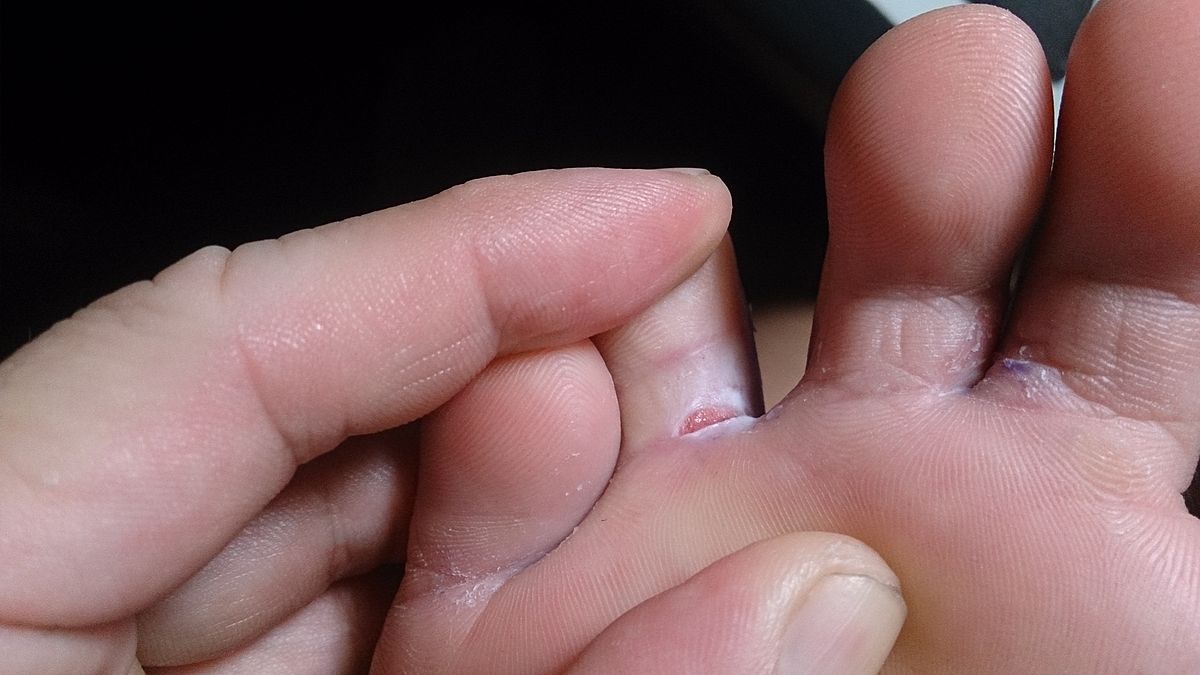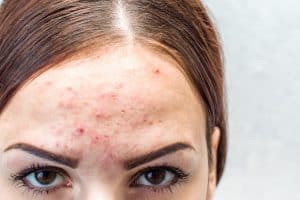Anyone can encounter fungal infections, especially in a tropical country like India. This is because moist and humid weather and environment are where fungi usually thrive and grow. Fungi can be found in the natural environment and a few fungi can be found in the body itself(1).
Just like how everything has a good and a bad side, so do fungi. There are useful fungi which are considered to be good for health and there are bad fungi which can cause infections.
Fungal infections occur when fungi enter the body and crowd in one area. They don’t grow in this area and it could be too strong for the immune system to handle.
Most of the time it is seen that fungal infections usually affect people who have a poor immune system and cannot get rid of the fungi at the initial stages itself.
What types of Fungal skin infections are there?
There are a few kinds of Fungal infections that affect everyone.
Athlete’s foot: Athlete’s foot is a common skin infection caused due to fungus. It can be seen on the feet in the form of blisters, sores, rashes, and cracks that can open up and be filled with blood and pus. It is a contagious infection which can spread to other places in the same person, or can be passed onto others. It can be spread especially when a person exchanges towels and other materials.

Although it’s called athlete’s foot, it is not restricted just to athletes. Anyone who is a frequent visitor to public pools, showers and even gyms could encounter this. Poor hygiene could also result in this, especially when you wear shoes for long periods of time but don’t wash your feet. If you have sweaty feet, this condition could be worse (2).
In most cases, the blisters on your feet can itch. When you tend to scratch them, however, the skin could crack open and release a fluid that mostly contains pus. If this isn’t cleaned properly, it could worsen the condition. Dry skin with skin peeling is also another symptom of Athlete’s foot.
This being said, foot rashes can be caused due to other reasons as well. These include irritant contact dermatitis, and allergic reactions.
Also read: Types of Skin Allergy: An overview
The doctor can diagnose the condition by looking at the manifestation alone. Although, in some cases they might ask you to take a skin test. One of the common tests that is done to diagnose this condition is the skin lesion potassium hydroxide exam. What’s done here is that the doctor scrapes off a part of the skin and puts it in a solution of potassium hydroxide. The chemicals dissolve the normal skin cells and leave the fungus infected cells. This, thus, can help in the diagnosis of Athlete’s foot.
What are the treatment options?
To treat athlete’s foot, once it is diagnosed your doctor might prescribe some ointment to be topically applied to the infected areas. This should be continued for at least four weeks to help get rid of the skin condition.
Oral antifungals or topical corticosteroids may also be prescribed.
Jock itch: Jock itch is the main form of ringworm that occurs on the skin. It is mainly found in the groin, buttocks or inner thighs. A moist environment is one that helps in culturing fungi. As a result, it’s mostly found in areas that retain sweat and feel warm and moist such as the folds of the skin.
Expectedly, it’s not restricted to athlete’s. It can be seen in people who exert too much pressure on their feet and who are obese as well. This is because the rubbing of skin against itself could cause friction and the folds retain sweat, which aid in the growth of fungi.
A jock itch usually looks like a red circular form of rash. The skin within the rash looks clear like an open field, unlike the boundary. It’s often raised from the surface of the skin and shows dryness, cracking and peeling.
Diagnosis is usually done by black light, with skin biopsies or scrape tests. Apart from black light tests, doctors can scrape a layer of the skin and examine it for potassium hydroxide which kills normal cells and leaves the fungal infected cells.
How is it treated?
Doctors usually prescribe antifungal properties and ingredients which can be ointments and creams that need to be topically applied.
Yeast infection: This is when yeast, which is a kind of fungi, grows more actively on the skin and causes red, itchy, rashes. This is not a contagious condition.
These look like rashes that can also have a little peeling and scaling around them.
They can cause diaper rashes in babies.
To diagnose this, your doctor might just have to do a physical exam and scrape a layer of the skin to test it for a yeast infection.
Depending on where the infection occurs, the form of treatment adopted can vary. It’s mostly topical medicated creams, like corticosteroids for example.
Ringworm: This is caused by the mold type of fungi that lives on dead tissue, hair, and nails. When you have this skin condition between the toes, it’s called athlete’s foot and when it spreads to the groin region, it’s called jock itch. They are red, itchy rashes in the shape of a circle (3).
This infection is contagious. So one of the ways in which you can acquire this is from another person, from your pets, or the soil, especially when you don’t wash your hands after being out in the dirt.
To diagnose this, your doctor will probably do a physical exam or do a biopsy to check for ringworms.
The treatment includes topical medication in the form of antifungal creams and lotions.
Vaginal Yeast infection: The vagina usually consists of bacteria and yeast cells. However, when the balance is disrupted, it could cause a vaginal infection, where the yeast cells can multiply (4).
This could cause your vagina to swell, itch and you might experience some kind of irritation. You might also have some kind of vaginal discharge. It may take around two weeks to heal in severe cases.
Poor hygiene can cause this infection. When a woman is on her periods and she doesn’t change her tampon, or pad for long periods of time, it could lead to an infection.
For a diagnosis, the doctor can have your medical history taken. A pelvic exam will then be done to check the walls of your vagina.
As a part of the treatment, antifungal creams, and ointments might be prescribed. In severe cases, the doctor will probably have to increase the duration for which you will be taking these medicines.
FAQs
Can antibiotics be used for Fungal infections?
Antibiotics won’t help in killing or treating fungal infections, because they primarily work on bacteria.
How to treat Fungal skin infections?
Depending on the type of fungal infection you have and its location on your body, your doctor will either give you corticosteroids, antifungal creams, ointments, and/or oral medication.
Is it better to see a Dermatologist for Fungal skin infections?
Since this has to do with the skin, it is advisable to get it checked with a Dermatologist.
Are fungal infections curable?
Yes, fungal infections can be treated and are curable. If you have a medical history with fungus, they could recur.
Are fungal infections contagious?
Fungal infections can be both contagious and non-contagious depending on the type. .For example, yeast infection is not contagious.
Noticing signs of yeast infection? Let it not go too far. Download the CureSkin App by clicking here to get cured! It’s easy, fast, and affordable.

